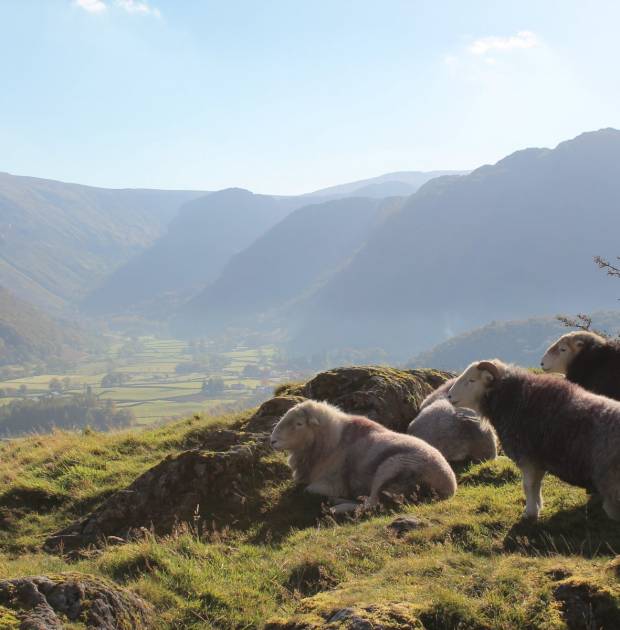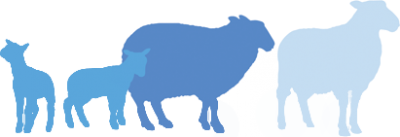UK Sheep Farming
The stratified sheep system is unique to the UK, and is perfectly designed to play on the strengths of different breeds and the environments and habitats of the country. The UK is made up of a huge range of terrains and landscapes, playing host to approximately 90 different sheep breeds and crosses. Click here to find out more about different sheep breeds in the UK. While not every sheep farm in the UK is involved in the stratified system, operating a ‘closed flock’ instead (one that has little or not exchange of breeding animals with other farms), the stratified system is widespread and very important. Of those farms involved in the stratified system, there will be considerable variation - some only being involved in one tier, other in two, and a small number having all three tiers within their business
The three tiers are hill, upland and lowland. Some sheep will stay on the same farm, or at least in the same tier, for their whole lives, while others are moved down the system. This system is crucial in keeping the UK sheep industry productive and efficient, and a collapse of any area would change the entire face of the industry.
Hill
Typical breeds: Welsh Mountain (several types), Swaledale, Scottish Blackface, Cheviots, Rough Fell, Dalesbred, Derbyshire Gritstone, Herdwick.
Traits: Hardy, thick-coated, able-bodied, excellent mothers, adapted to living in the harsh hill conditions.
Purpose: Pure-bred breeding stock. Surplus female lambs and wether lambs (castrated male) are sold as stores to upland/lowland farms to be fattened. Older ewes that have lambed several times are transferred to the milder climates of lower areas and crossed with longwool breeds to produce Mules and half-breds.
Where to find them: Mountain and hill areas that have harsh climates, a short grass-growing season, relatively poor quality of soil and long winters.
Upland
Typical breeds: Female hill breeds mated with breeds such as Bluefaced Leicester, Border Leicester, Teeswater, Wensleydale, Devon & Cornwall Longwool.
Traits: More prolific than hill breeds, and do better on the lower, easier terrain. Mules inherit mothering abilities of hill relatives and prolificacy of upland relatives.
Purpose: Older ewes’ drafter from the hills can continue to breed in the easier conditions and are mated with longwool upland breeds to produce Mule lambs. Female Mule lambs are transferred to lowland farms for breeding. They are crossed with a lowland/terminal sire breed. Male lambs are reared for meat production, either here in the uplands or on a lowland farm.
Where to find them: Where conditions are less harsh than in the hills, but land and soil is still not very productive
Lowland
Typical breeds: Texel, Suffolk. Charollais, Clun Forest, Romney, Oxford/Hampshire/Dorset Down.
Traits: Grow fast, have a heavier frame, more prolific.
Purpose: Mule ewes are mated to a lowland terminal sire breed to produce crossbred lambs. Most lambs are reared for meat production but some may be kept for replacements. The easier terrain and conditions, better grass growth and larger frame inherited from the terminal sire, mean these lambs grow faster and produce more meat in less time. Slower growing lambs join the store lambs that have arrived from the hill and upland areas to be grown on root crops over the autumn and winter months.
Where to find them: Some low lying areas of Wales and England, mostly in central and eastern England where soil is far more productive and therefore mostly arable. Sheep become part of arable rotations, where fields that have grown crops for a number of years are put to grass to help improve the soil.





